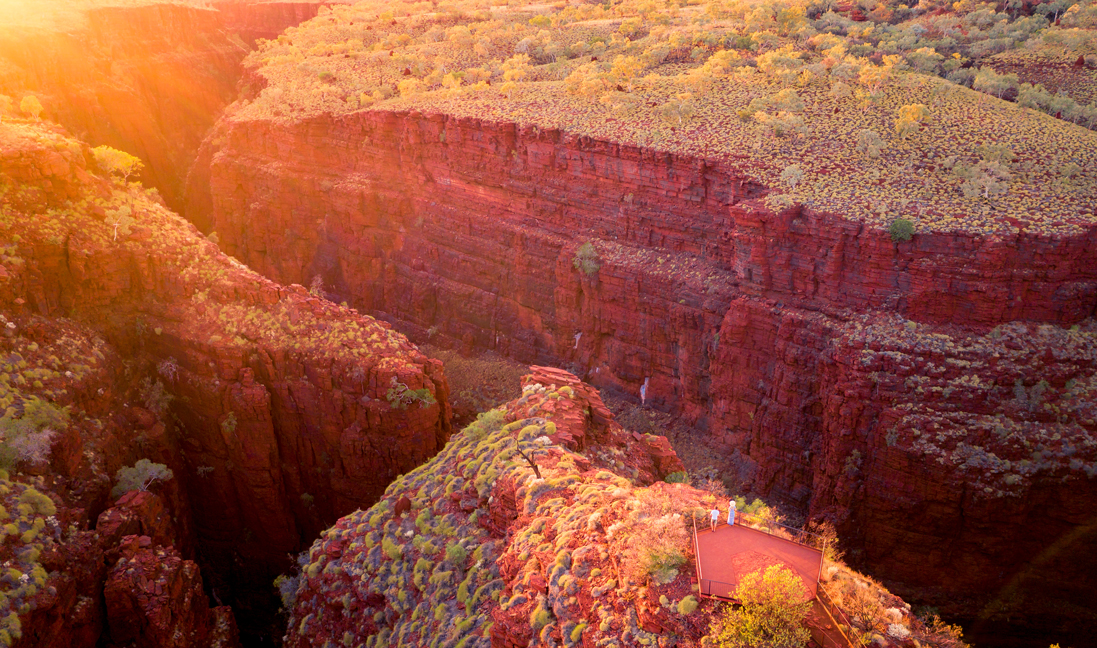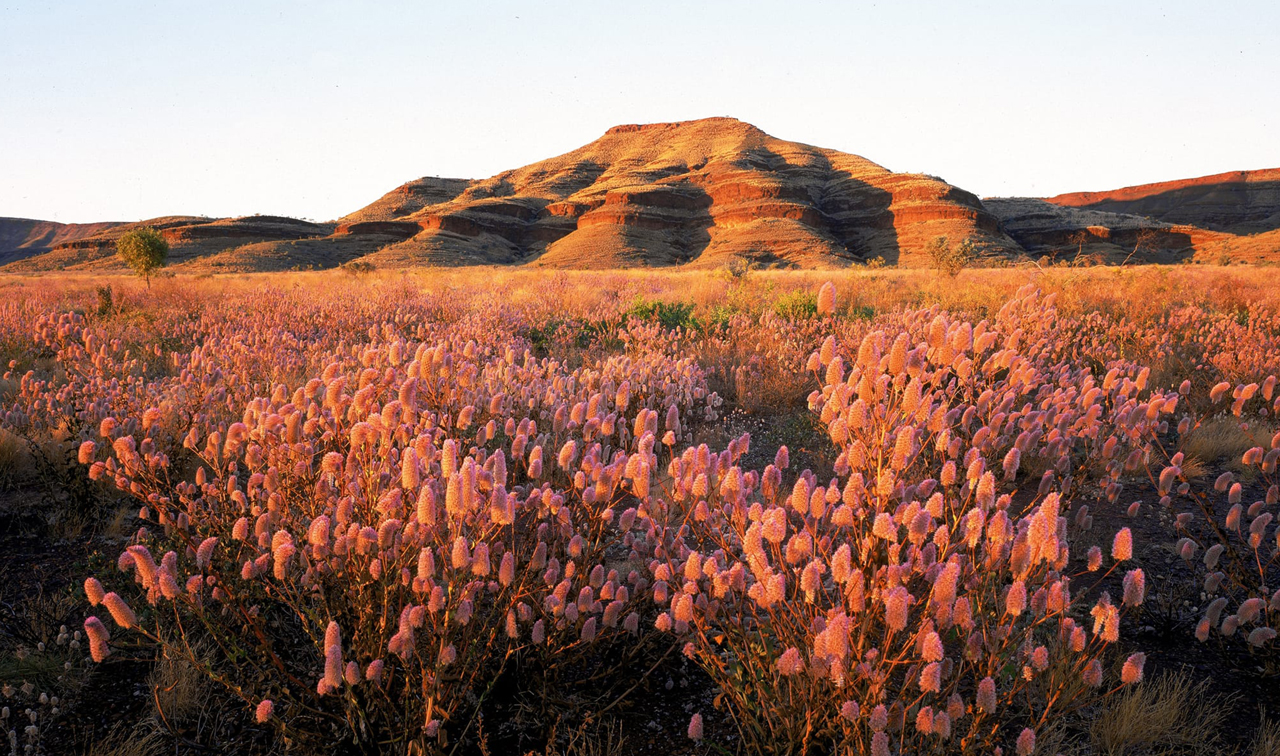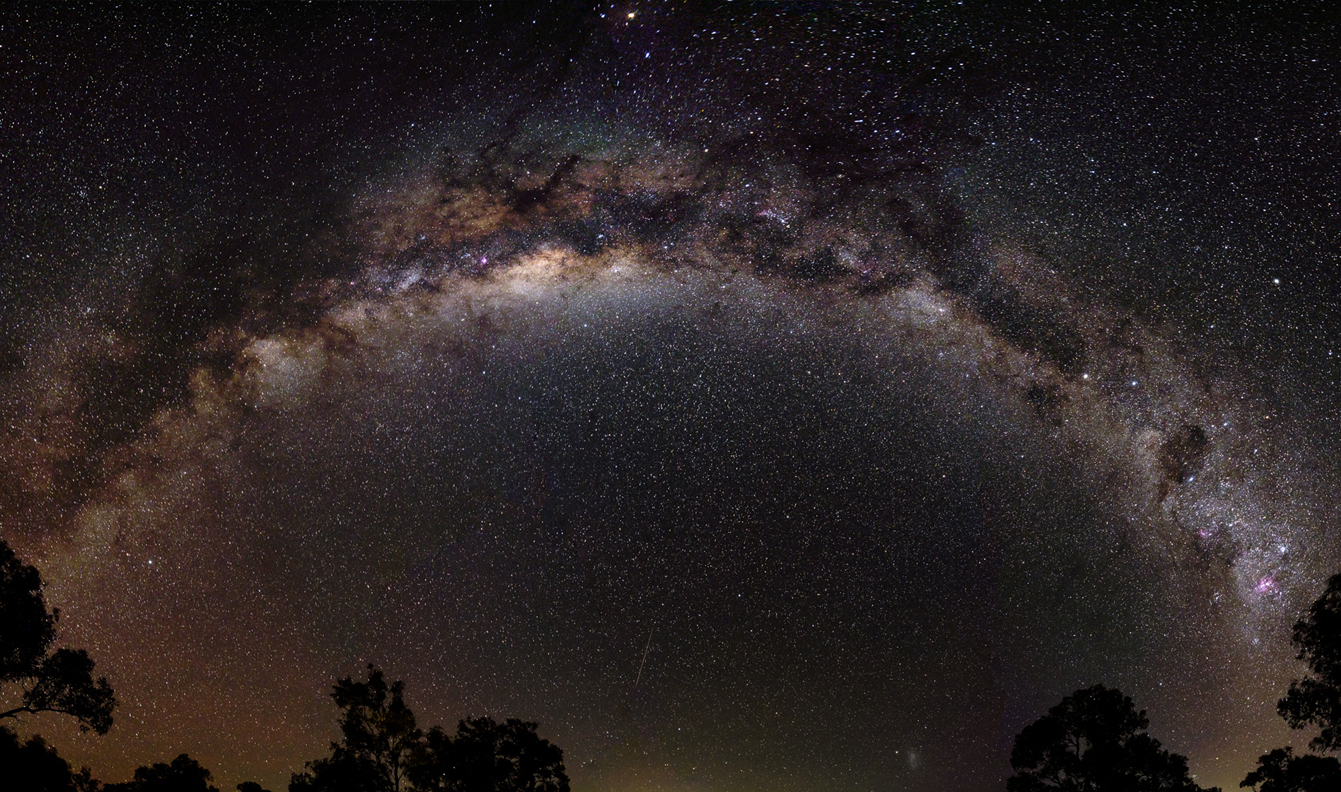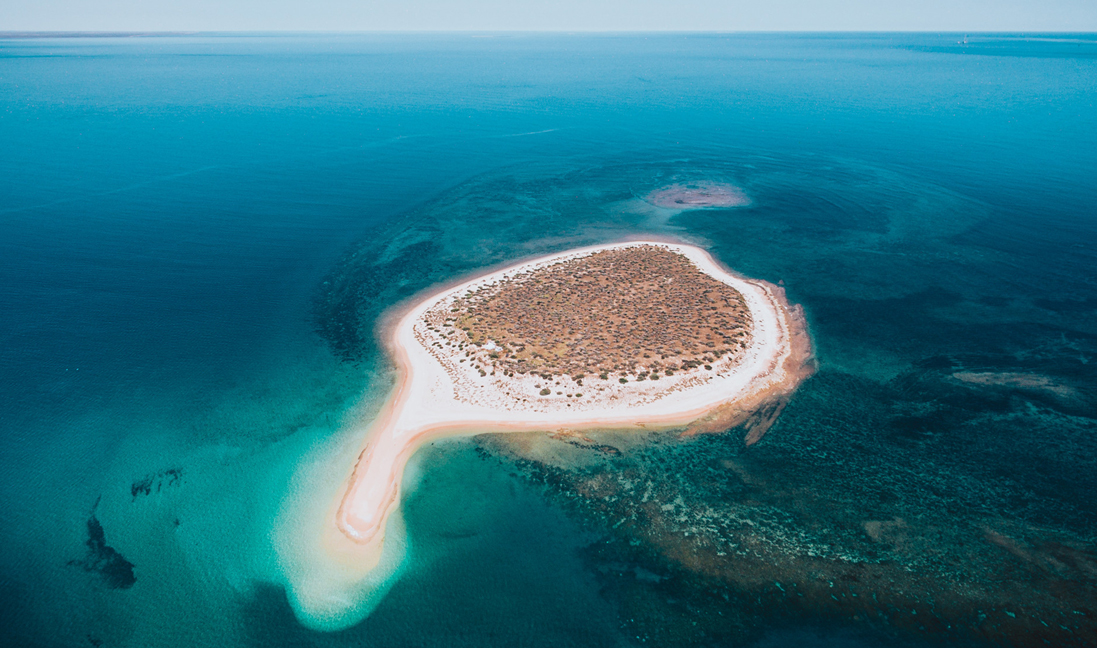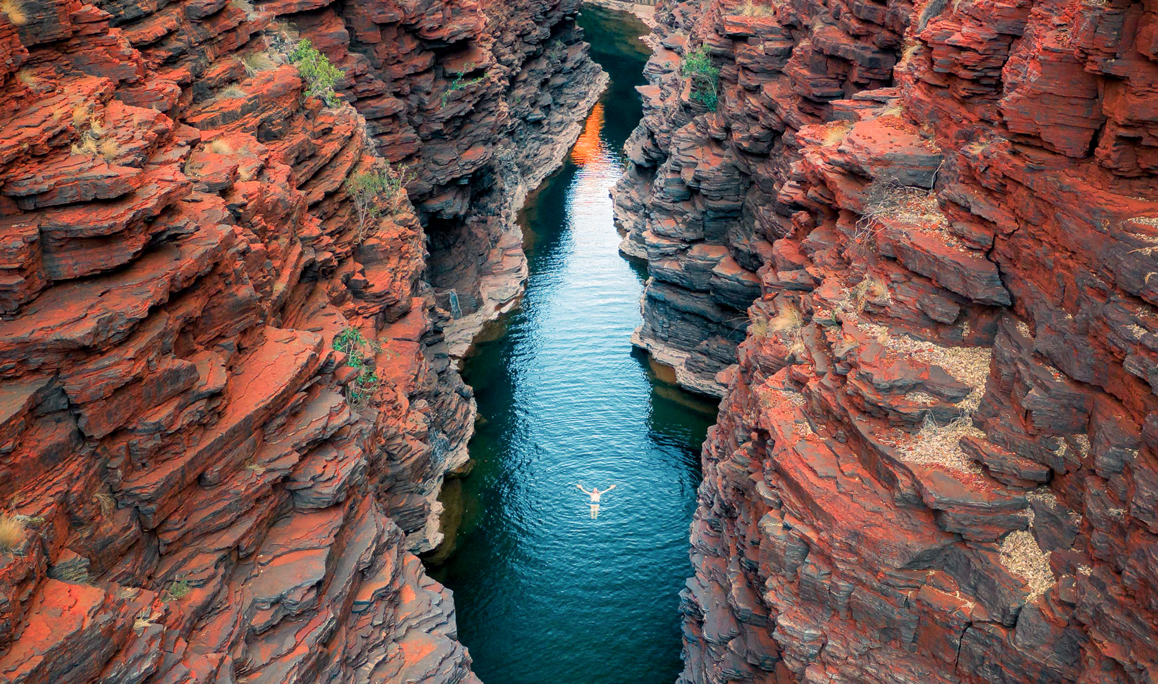
THE WARLU WAY PILBARA INLAND ROUTE
NASA SAYS IT'S JUST LIKE MARS...
WE SAY YEAH, BUT WITH ROCKPOOLS.
RED RICH PLUNGING GORGES.
FERN LINED OASIS WATER HOLES.
EVERY WAY LEADS TO AN EXPERIENCE.
Plunging gorges and soaring mountain peaks carved from the landscape over millennia, punctuated by idyllic swimming holes and waterfalls, The Warlu Way Inland includes the jewel in the Pilbara’s crown, Karijini National Park. You’ll also experience Tom Price, Paraburdoo and many more stunning locations.
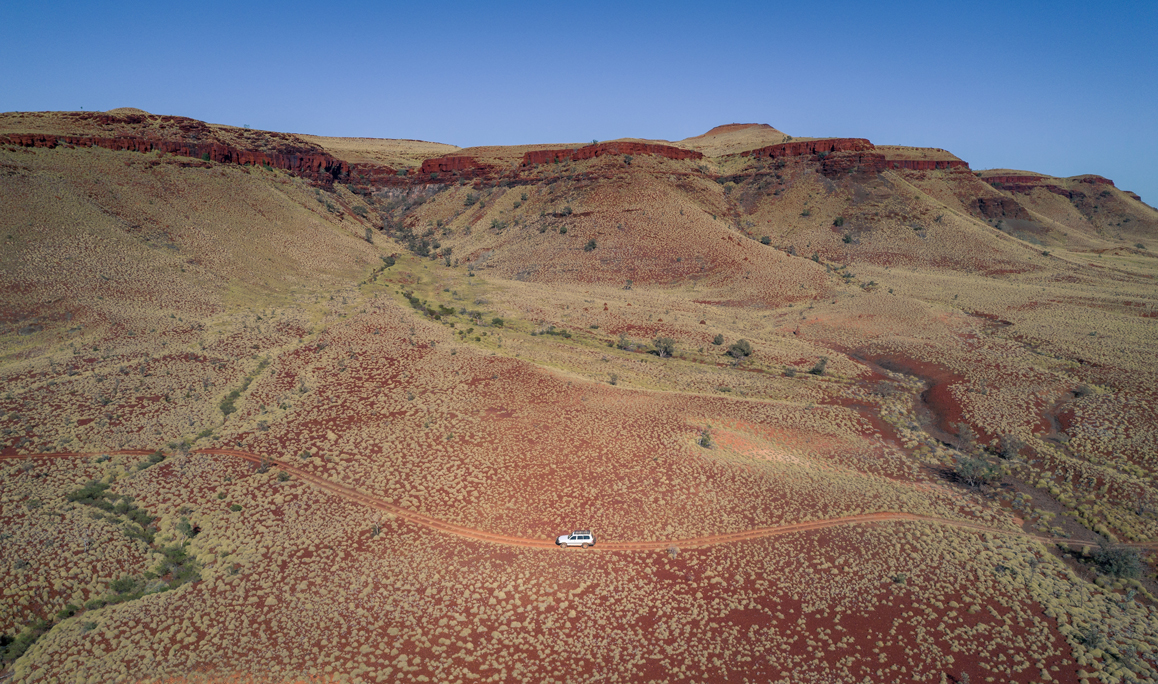
THE WARLU INLAND WAY COVERS THE BREATHTAKING KARIJINI NATIONAL PARK, MILLSTREAM CHICHESTER NATIONAL PARK, THE TOWNS OF TOM PRICE AND PARABURDOO.
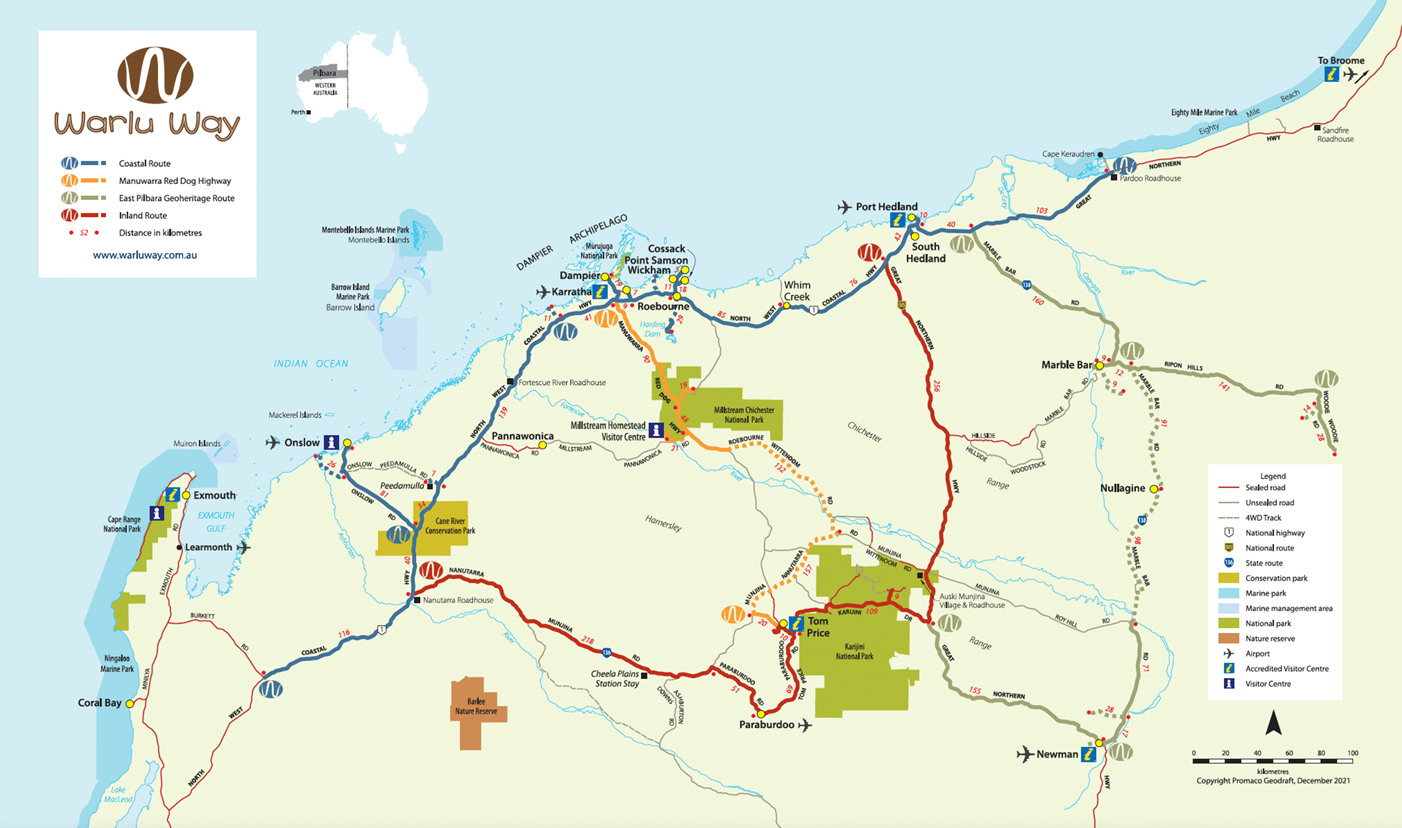
22
INLAND WAY THINGS YOU MUST DO.
1. EXPLORE THE PILBARA CROWN JEWEL OF KARIJINI WONDERS
Karijini National Park is one of the key ‘must do’ highlights of the Pilbara and Western Australia. Ghost white gum trees, termite mounds and expansive rich red plains, give way to its natural beauty of red cliff sandwiches that layer up the spectacular gorges which have been eroded by nature over billions of years. Karijini’s stunning gorges, mountains, ancient rocky tunnels and crystal-clear oasis waterways and waterfalls will give you moments of awe and memories that last a lifetime. Explore its many trails, then cool off under waterfalls and fern-edged, crystal-clear, tree-lined waterholes.
2. TIME TRAVEL INTO A TRULY ANCIENT WILDERNESS.
Karijini’s deep gorges and high peaks are truly an ancient landscape, with some of the oldest rock formations exposed on the Australian continent. The evolution of its landscapes we see today, started over 2500 million years ago, when fine, iron-rich sediments accumulated on an ancient seafloor. Over millions of years, further sediments were overlaid, creating immense pressure on the underlying layers, transforming them into solidified layers of rock. Horizontal compression caused the rock to buckle and crack, before rising up out of the water to form dry land. A drop in sea level caused creeks and rivers to cut down through these rocks, creating the deep gorges we see today. The types of rock that can be seen especially well in the gorges, are the banded iron formations, dolomite (similar to limestone with a grey or pale brown colour) and Mount McRae shale (very soft purple or pink rock). Who knew rocks really could rock your world?
3. HIKE TO AND SWIM AT DALES GORGE - KARIJINI.
Dales Gorges is the perfect Karijini National Park ‘three for one’ highlights package. Here, you can experience the beautiful Fern Pool with its small twin waterfalls, Fortescue Falls and lookout, as well as Circular Pool and lookout. These are some of the prettiest gorge settings you can take a swim in Western Australia. Each location is accessible via different trails options of either walking via directly to them or on a trail loop to see all three. Please note – there are various trail challenges of walking on ledges, stepping-stones and ladders.
4. SEE THE RARELY SEEN SIDE OF KARIJINI.
Delve deeper with a guided tour of Karijini – whether that’s a half or one-day tour departing from Tom Price; a visit as part of an extended West Coast or Pilbara itinerary departing Perth, Exmouth of Broome, or a private charter designed just for you. At the park, you’ll have the opportunity to join a stargazing at Dales Gorge, or join a specialist canyoning tour on selected dates during the year.
5. EXPLORE THE REMOTENESS OF HAMERSLEY GORGE - KARIJINI.
Hamersley Gorge is the most remote of the Karijini gorges. You can find it in the north west corner of the National Park. It’s well worth the effort of discovery, as it offers a tremendous view of folded bands of coloured ancient rocks. Plus there are stepped waterfalls at the base of the gorge. Hamersley Gorge is wider than other gorges in the park, and offers more expansive views on the descent into the gorge itself. It really shows off the incredible layers of rock that were bent and buckled before they pushed their way back to the surface millions of years ago. At the base of the gorge, there’s a fab gorge water-pool perfect for a dip and a place to chill under the shady trees.
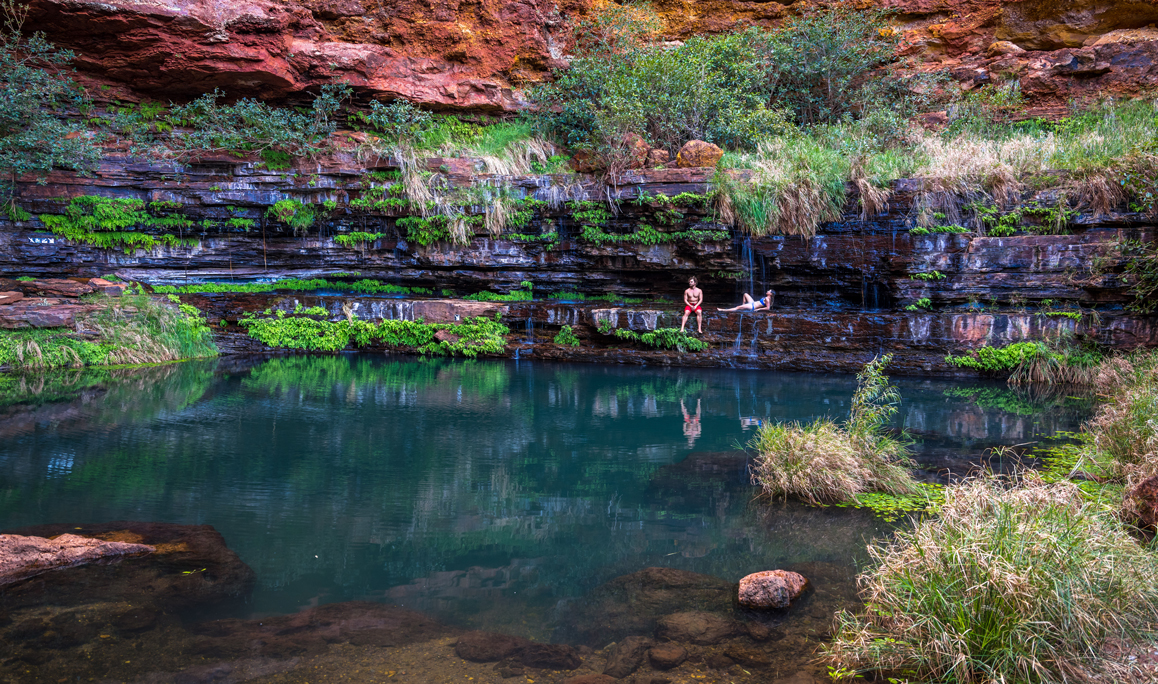
6. ADVENTURE INTO THE STUNNING HANCOCK GORGE - KARIJINI.
Hancock Gorge is simply stunning for the for the fit and adventurous to do. The adventure begins climbing down a ladder, then walking deep into the gorge, through a series of narrow chambers and past beautiful rockpools. Although the trail is short, it’s the most exciting trail in the park. It threads its way through the gorge to a narrow canyon opening onto a natural amphitheatre and onwards through the infamous Spider Walk to the green waters of Kermits Pool. Hancock Gorge is accessed via a Class 2 trail from the Weano Recreation carpark, with a side trail linking this part of the Hancock Gorge trail to the Oxer and Junction Pool lookouts walking trail. Please note – caution should be taken when entering Hancock Gorge.
7. HIKE INTO A BEAUTIFUL AMPHITHEATRE - KARIJINI.
Joffre Gorge is where you’ll find a stunning natural amphitheatre with a spectacular curved seasonal waterfall. The trail into the gorge includes some more challenging sections for those who wish to reach the pool downstream from the waterfall. Walkers will need to scramble their way down some rock slabs to the waterfall. The Joffre Falls walk trail is approximately 1.5 kilometres return. You’ll also get some wonderful views across the gorge from a lookout platform.
8. MAKE YOUR WAY TO THE ROCK ARCH POOL - KARIJINI.
Located part-way between the Weano Gorge and the Karijini Visitor Centre, Kalamina Gorge is the shallowest of the gorges in the park, and offers a good introduction to the gorges’ system. After an initial descent down a set of roughly hewn steps, the track at the base of the gorge brings you to a seasonal waterfall trickling over rock ledges into a small permanent pool. To explore the gorge further, it’s a fairly easy walk through the gorge itself, following the stream past rock pools and banded rock walls to Rock Arch Pool.
9. GET A KNOCKOUT KARIJINI VIEW FROM KNOX LOOKOUT.
The Knox Lookout has spectacular views across Knox Gorge where it connects with Wittenoom Gorge. It’s so worth a visit in the early morning or late afternoon, when sunlight enhances the beautiful colours of the steep rock faces. From the lookout, a path takes you to the start of the Knox Gorge trail. This takes you down into the gorge to where the gorge narrows to a slot canyon. This trail is two kilometres return and requires some scrambling over rocks and a small amount of ledge walking so please be careful.
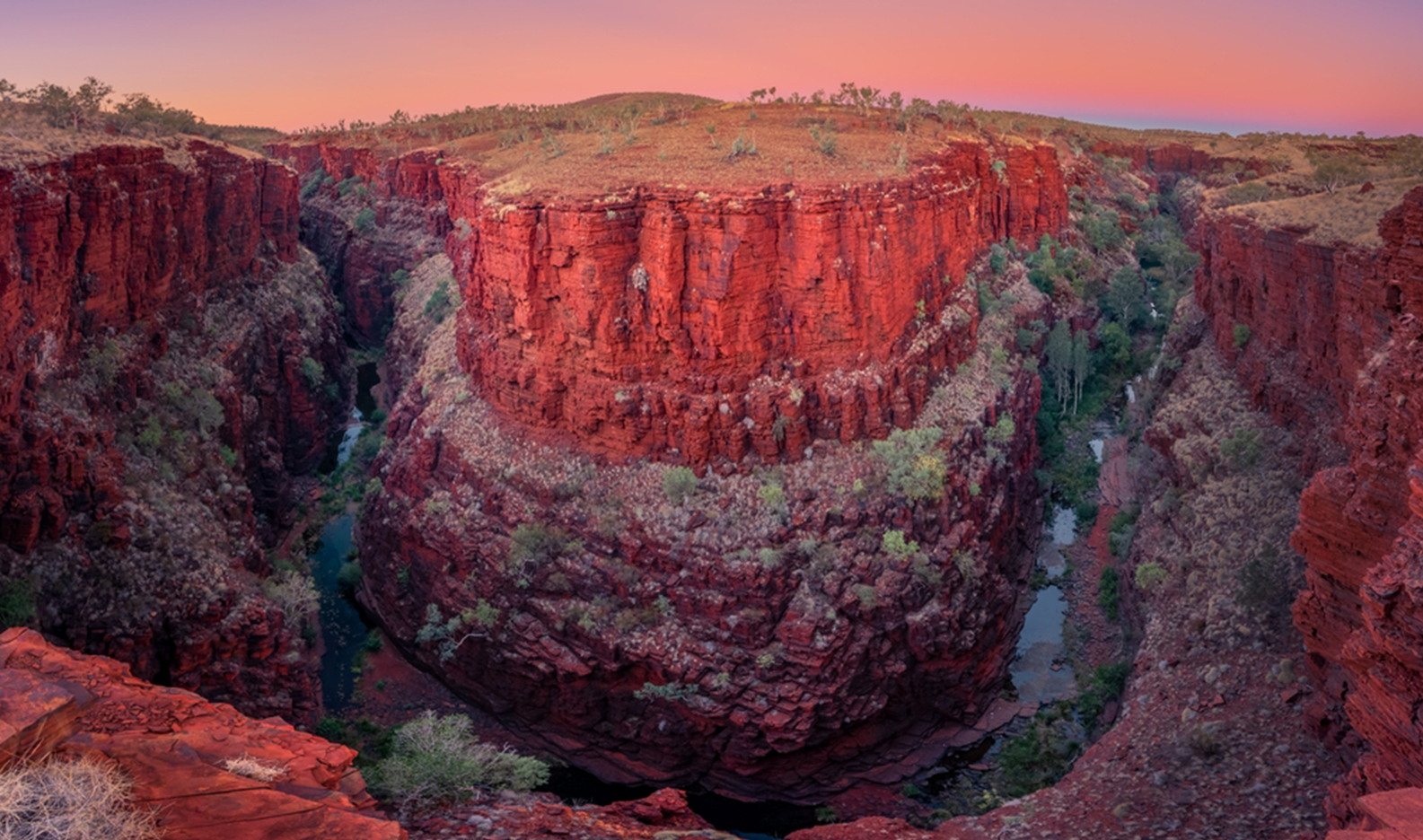
10. FALL IN LOVE WITH AN ANCIENT GARDEN OF EDEN.
The Karijini National Park isn’t just about stunning gorges. It’s also home to a diversely beautiful grasslands, forests and pockets of seasonal wildflowers. Fun fact – flora in the park includes over 500 species of native flora, including some rare species. From June to September each year, the Pilbara’s wildflowers burst into bloom, including the purple mulla mullas and Karijini wattle. You might have surprise meetings with a wide range of native wildlife. There are over 125 species of birds in the park that mostly live near the pools and streams. Keep an eye out for the spinifex pigeon with its tall head crest. You may also see red kangaroos, euros (kangaroos that are common to the rocky country), Rothschild’s rock wallabies, echidnas, dingoes, as well as such as the endangered northern quoll and Pilbara ningaui. Reptiles and amphibians such as frogs, geckoes, goannas, dragons, legless lizards, pythons and other snakes can also be found within the park. Another fun fact – the Bungarra (sand goanna) can grow up to 1.6m and you might see one foraging and smelling the air with its forked tongue.
11. MEET THE HIGH AND MIGHTY MOUNT BRUCE - KARIJINI.
Mt Bruce, or Punurrunha, is Western Australia’s second highest mountain and boasts one of the country’s most scenic walks. There are three walks differing lengths and classifications, offering something for most visitors. For a view over the nearby Marandoo mine, there’s a 500 metre walk from the Mt Bruce carpark to Marandoo View which is an easy option. The Honey Hakea trail continues on from the Marandoo View for another 1.8 kilometres to a vantage point with views over the mountain ranges and towards the Marandoo mine. For those wanting even higher views, the Mt Bruce Summit trail takes you a further 2.2 kilometres to the top. Although more challenging, the extra effort offers spectacular views across the Hamersley Ranges.
12. TAKE IN ONE OF WA’S MOST STUNNING PANORAMAS.
Located at the junction of four mighty gorges, Oxer Lookout offers one of the most stunning panoramas in Western Australia. Standing here, you’ll experience the sheer enormity and grandeur of the Joffre, Weano, Hancock and Red Gorges. At the Junction Pool Lookout, Weano Gorge, Hancock Gorge and Red Gorge all meet and are at their most spectacular in the mornings and evenings, when the sunlight deepens the red colour of their rock faces. Take your camera and keep your phone charged as you need to capture the moment in its full beauty.
13. WALK INTO WEANO GORGE TO THE HANDRAIL POOL.
A short walk into Weano Gorge offers the best introduction to Karijini National Park’s ancient landscapes. Walkers can choose to enter Weano Gorge in two places. The first is a longer walk through Upper Weano Gorge starting at the carpark, and second is a shorter walk through Lower Weano Gorge starting from the trail towards Oxer and Junction Pool lookouts. The Weano Gorge trails require some scrambling and wading through water. The last part of the trail to Handrail Pool is more challenging as hikers will need to walk over stepping stones and use the handrail to help negotiate the climb into the spectacular Handrail Pool. You can also join a Karijini tour to explore the challenging trail beyond.
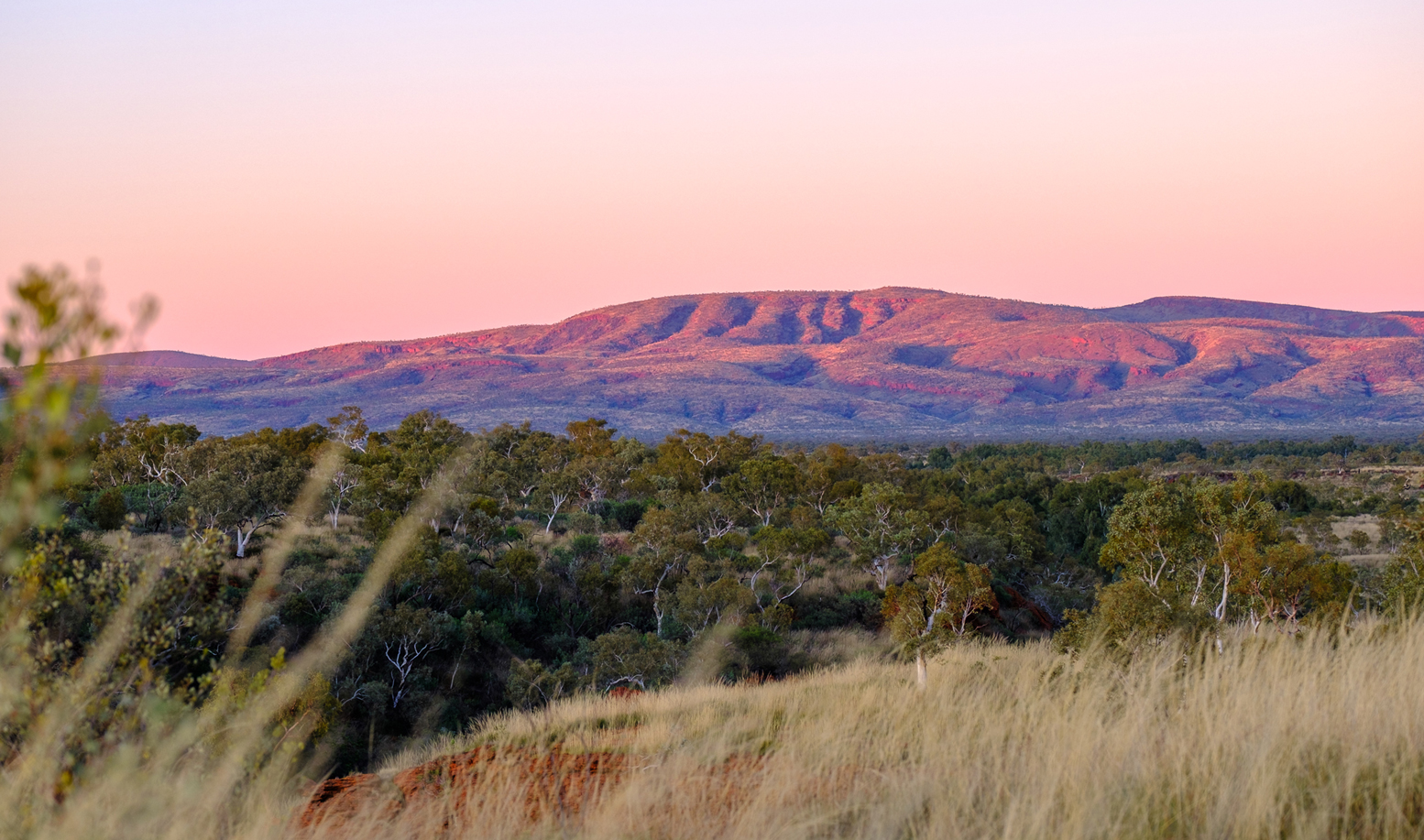
14. DRIVE UP TO WA’s HIGHEST TOWN.
At 747 metres, Tom Price is the highest town in Western Australia! Named after Thomas Moore Price, the vice-president of the giant United States steel company Kaiser Steel, Price was one of the main supporters of the Pilbara region in the early 1960s. The most prominent feature of Tom Price is the peak known as Mt Nameless (1,128 metres) or Jurn-damurneh to the local Aboriginal people, meaning ‘wallabies live near here’. Its summit is accessed along a four-wheel drive track, and it’s also possible to hike to the summit for amazing views of the local landscapes. Take an organised tour of the massive Rio Tinto Iron Ore Mine on tour. Or pack a picnic and head out to natural bush setting of Kings Lake which has barbeques and gazebos. The town offers a caravan park and hotel/motel as accommodation options.
15. HIKE WA’S SECOND HIGHEST ACCESSIBLE MOUNTAIN.
Mount Nameless, known as Jarndunmunha to local Aboriginal people, is located in Tom Price. Its peak stands 1128 metres above sea level and is the second highest accessible mountain by four-wheel drive in Western Australia – which offers all of the rewards of a spectacular mountain view without the hike! Or if you’re keen to stretch your legs and work on those glutes, you can hike to the summit. A walking trail starts from the base of Mount Nameless at back of the Tom Price Speedway track, just allow three hours for the return hike. From the lookout you’ll have sweeping views across the Hammersley Ranges, the town of Tom Price and the iron ore mining operations.
16. SNUGGLE INTO SOME NATURE-BASED CAMPING.
Millstream Chichester National Park, near the town of Roebourne, offers some of the best nature-based camping in the Pilbara. Sip your morning coffee to a wide-open vista of rolling hills, escarpments, tree-lined rivers and water pools at Millstream Chichester National Park. the park covers an area of approximately 200,000 hectares around the Fortescue River – the heartland of the Yindjibarndi people. Millstream is a lush oasis of deep gorges and palm-fringed rock pools, which provide a stark contrast to the surrounding rocky red escarpments and rolling yellowy-sage spinifex covered hills. Fun fact – water run-off from the Hamersley Ranges flows via the Fortescue River into an underground aquifer that’s believed to contain in excess of 1,700 million cubic metres of water and cover an area of almost 2,000 square kilometres. There are a range of walking and bike trails within the park along with other attractions.
17. HIKE AND SWIM IN MILLSTREAM CHICHESTER NATIONAL PARK.
Don’t let the name put you off, but Python Pool is a stunning rock pool swim spot. Not only refreshing, it also has a spectacular backdrop of the imposing rugged ochre cliffs. Python Pool is easily accessible by road, via the Roebourne-Wittenoom Road within the park, and a walking trail. If you like a good hike, take The Camel Trail. It starts at Python Pool and is an eight kilometres, three hour (one way) moderate walk. The trail winds its way up through rolling Spinifex covered hills and large termite mounds to the sandstone escarpment of the Chichester Range. Another fabulous swim spot is Deep Reach Pool. Just a 200m walk from the Deep Reach Pool carpark brings you to a large pool, home of Barrimurdi, the Warlu or Serpent. The Yinibardni people ask that you respect the site and keep noise to a minimum. Fishing, swimming and canoeing is permitted, however motorised watercraft is not permitted.
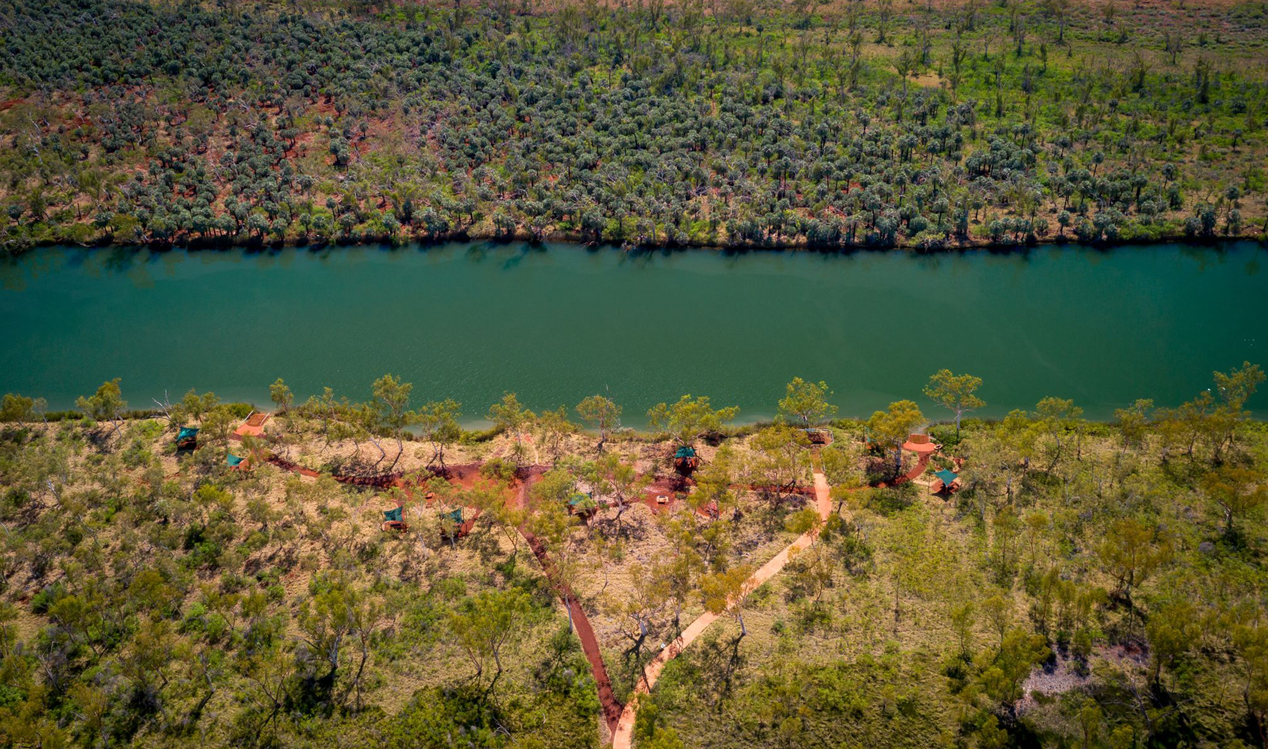
18. SEE HOW EARLY SETTLERS LIVED AT MILLSTREAM STATION.
Attracted by the bounty of water under Millstream Chichester National Park, early European settlers established a pastoral station where the park now sits. The cattle station remained in operation for over 100 years and is now the Millstream Homestead Visitor Centre. It’s where you can get all the information about the park’s attractions, as well as learning about the life of the Yinjibardni people and early pastoral settlers. You can explore station life in Millstream in the 1930s, by following the insightful 750m Homestead Trail.
19. TAKE THE SNAPPY GUM DRIVE FOR PANORAMIC LOOKOUT VIEWS.
Snappy Gum Drive is a 20km scenic loop road. It links the Millstream Homestead Visitor Centre with Pannawonica Road. Stop at the many scenic lookouts which provide beautiful views across the Fortescue River Valley. Undulating hills and several important indigenous areas can be seen from the road. Its easily accessed by 4WD vehicles year-round and by 2WD (low clearance) vehicles when indicated on signs found at either entrance point. Another great lookout, although not on the same scenic drive, is at Mount Herbert. It forms part of the Chichester Range. Park your car at the base of the mountain, and take the challenging 45 minute return climb. Mount Herbert’s peak offers spectacular panoramic views of the surrounding countryside.
20. LEARN THE SIGNIFICANCE OF LOCAL ABORIGINAL SITES.
The Yindjibarndi people are the traditional landowners of WA’s Millstream Chichester National Park. The Juluwarlu Aboriginal Corporation has produced a guide book called “Ngurra Wardurala Buluyagayi: Exploring Yindjibarndi Country”. In consultation with the elders, the Corporation has compiled accurate site descriptions, including songs and stories that are linked to the land, in English and Yindjibarndi. The guide book also includes a fold-out (A3) map of Millstream Chichester National Park, making it an essential guide for any visitor who seeks a deeper understanding of Yindjibarndi country. Pick your copy up from the Millstream Homestead Visitor Centre, and also find out the best camping spots while you’re there.
21. CALL INTO ‘MEAT FEATHERS’ AND MAYBE SEE A UFO.
Paraburdoo is a small mining town. It takes its name from the Indigenous word Pirupardu, meaning ‘Meat Feathers’, because of the large resident population of white corellas. Paraburdoo is the closest airport to Karijini National Park. Car hire is available at the airport and also has stores in town to stock up on supplies. Established in the 1960’s as a mining town, Paraburdoo is renowned for its beautiful scenery, wildlife diversity and interesting short history – which includes UFO sightings, the discovery of 200-year-old bones and even royal visits. It also offers exceptional bird watching at Palm Springs. Keep an eye out for the Terex Haul Truck, or the “Jolly Green Giant” on Camp Road. This was one of the trucks used to haul iron ore at the Paraburdoo mine in the 1970s and 80s. Drive up to Radio Hill Lookout for panoramic views over the town. Then drive on to Kelly’s Pool which is a popular spot for picnics alongside the water, however swimming is not permitted.
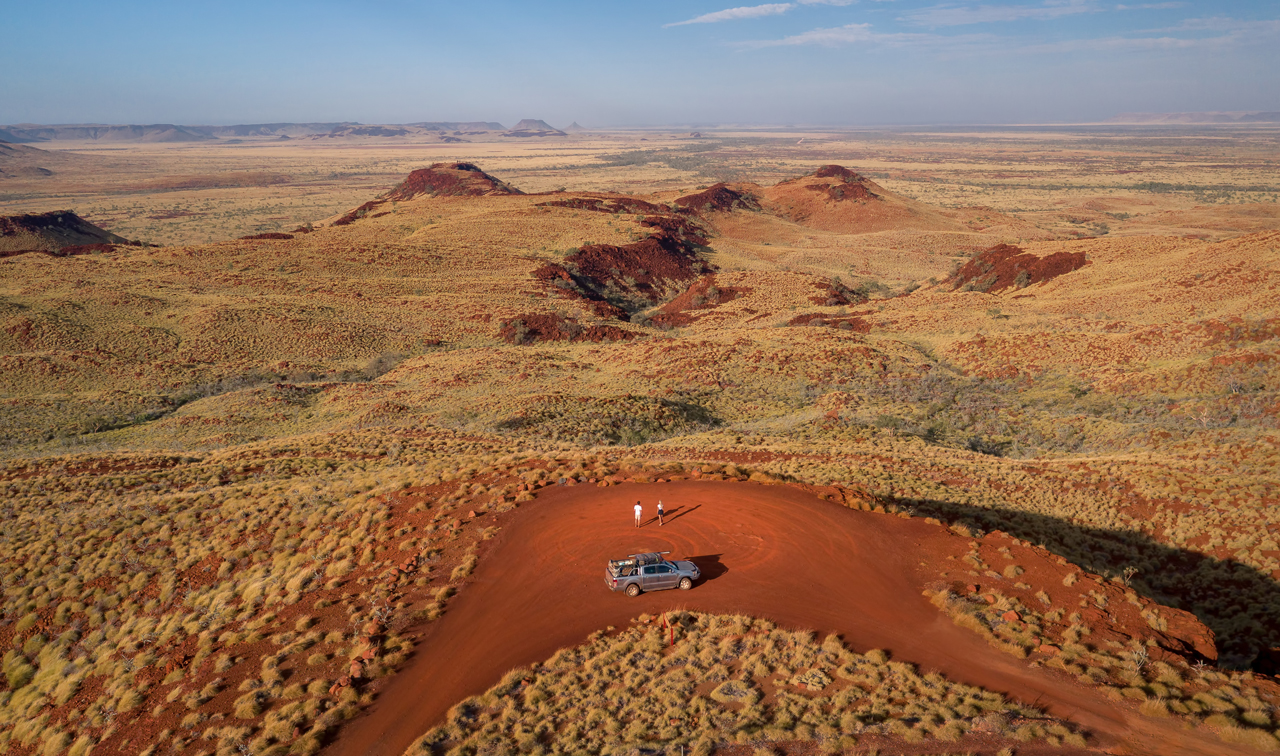
22. STOP AND ADMIRE ICONIC PILBARA SCULPTURE.
Located three kilometres just outside Paraburdoo on the road to Tom Price, is a beautiful and imposing sculpture was created by WA sculptor Alex Micke in collaboration with the local community. It’s made from steel plate, shaped during a series of controlled blasts and from Banded Iron and Formation stone, which was excavated on the mine site locally. It weighs almost nine tonnes. Be sure to stop and admire it. At sunsets it offers a beautiful insta photo opportunity.
23. JUST SAYING THE NAME "PANNAWONICA” MAKES YOU WANNA VISIT IT.
Pannawonica takes its name from nearby Pannawonica Hill, or the “hill that came from the sea”. The traditional story is that Pannawonica Hill was once an island over which two local groups were in dispute, until a sea spirit decided to resolve the dispute by moving the hill inland. As the hill was dragged over the land it left a deep indentation which became the Robe River. The area around Pannawonica area is part of a 2500 million year old formation containing the Hamersley Group of rocks, formed by chemical sedimentation of minerals in an ocean environment. Pannawonica is a ‘closed town’, (built in 1970 to house the employees of Robe River Iron) but visitors are welcome to visit to for supplies and to refuel. On your way to Pannawonica, keep an eye out for the “Boot Tree” – it’s something of a tradition that when people leave Pannawonica permanently, they leave their boots behind, hanging from the branches of this tree. Along the Robe River, there are some great shaded swimming holes with picnic areas. And every September the town has its annual Pannawonica Rodeo/Robe River Rodeo. Please note – Pannawonica is also the western gateway to Millstream Chichester National Park, approximately 1.5 hours from Pannawonica along the unsealed Millstream – Yarraloola road. If travelling this road, it’s recommended that you notify the Pannawonica Police or the Millstream Ranger of your intention to travel. The road is not suited to busses, caravans, trailers or two-wheel drive vehicles.
SEE MORE STUNNING PHOTOS AND EXPERIENCES IN OUR E-MAGAZINE TO START PLANNING YOUR WARLU WAY PILBARA HOLIDAY.


